Black and Blue Steak (Pittsburgh Style)
Published April 15, 2024. This post may contain affiliate links. Please read my disclosure policy.
In this classic American recipe, this Pittsburgh-style black and Blue Steak is charred on a grill until dark on the outside while rare on the inside. If you like a lot of dark char marks on your steak but still want it to be red on the inside, then this procedure is for you.
We don’t eat beef that often these days, but occasionally, we do have a craving for some. If you want a great steak, try my Sous Vide Steak or Steak Frites.
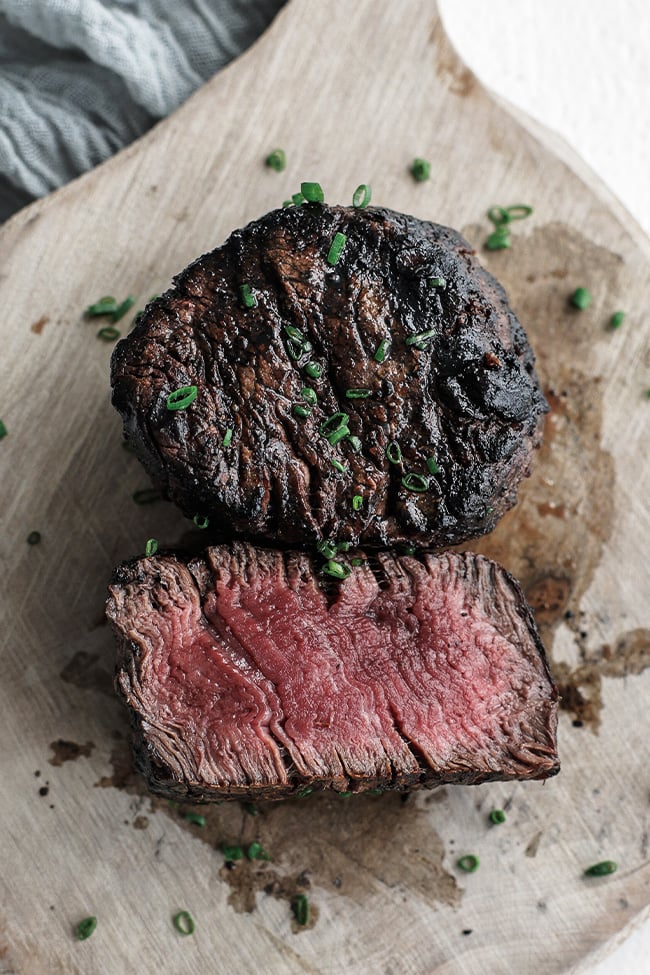
Black and Blue Steak
Black and blue steak is a steak that is charred on a very hot grill until black on the outside while the internal temperature remains rare or rawer, also known as blue. This cooking procedure is also known as Pittsburgh Blue or Pittsburgh style.
Legend has it that when the steel industry in Pittsburgh was booming, the workers would bring cuts of meat to cook and eat since there was nothing but hot metal around. Some of the metal surfaces could reach 1800° right out of the fire. This would help these workers’ steaks get an incredibly dark sear in only seconds while remaining rare in the center.
Ingredients and Substitutions
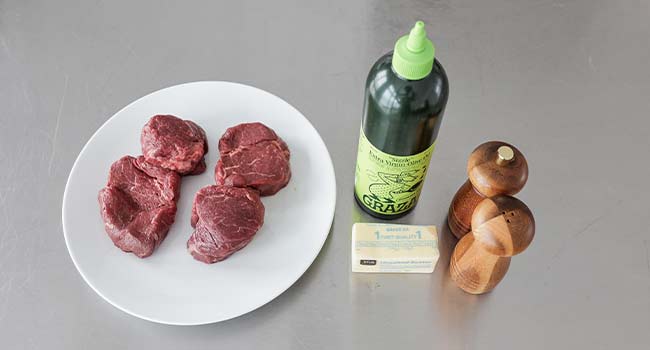
- Steak — This recipe uses filet mignon. Other cuts that would work well for this procedure are ribeye, strip steak, top sirloin, skirt steak, or flank steak.
- Fat — I coated the steak in olive oil before seasoning it, although any neutral-flavored oil, such as avocado oil, will work. In addition, I placed ice-cold butter around the steak as it grilled to help ignite the flames and give it a proper char. The other option would be to use pieces of trimmed beef fat around the steak.
- Seasoning—This dish uses only coarse salt and pepper. However, you can use any seasoning rub, such as homemade Blackened Seasoning.
How to Make a Black and Blue Steak
Pat the steak down on all sides with a paper towel.
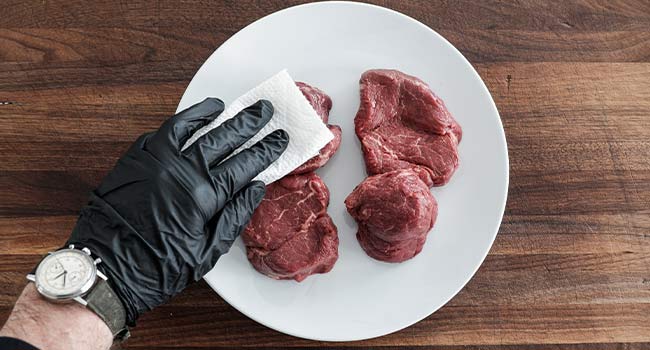
Coat the steak on all sides with the olive oil.
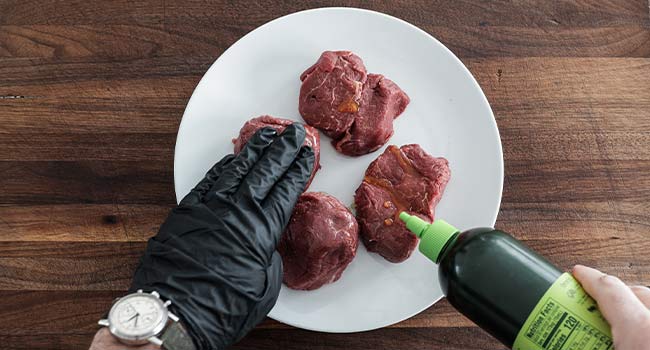
Season the steak on all sides with salt and pepper.
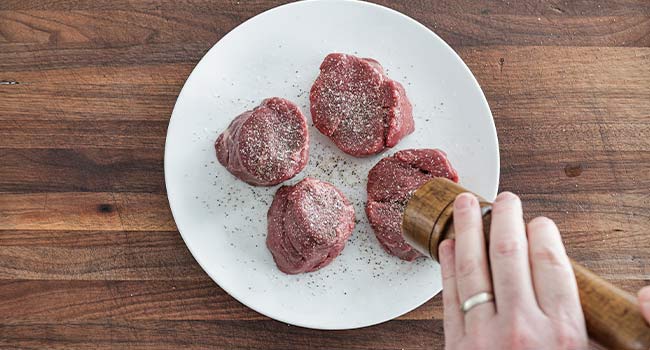
Place the oiled and seasoned steaks on a preheated grill to high heat, which should be between 550° and 650°.
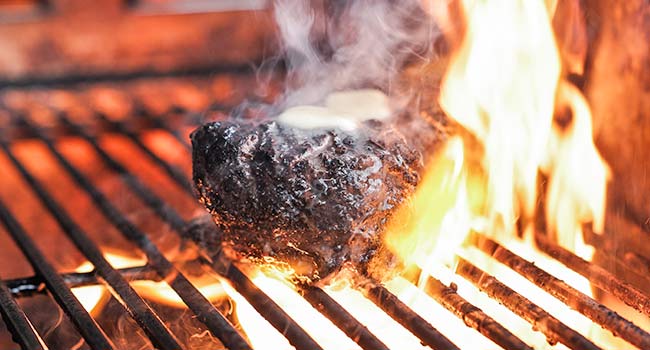
Once the steaks are on the grill grates, immediately add the butter directly around the steak and on the top to cause hot flames to shoot up over the grates to char the steak.
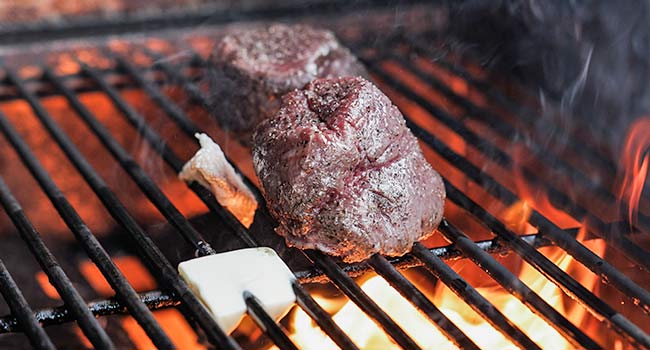
Another option would be to put pieces of beef fat next to the steaks in place of the butter.
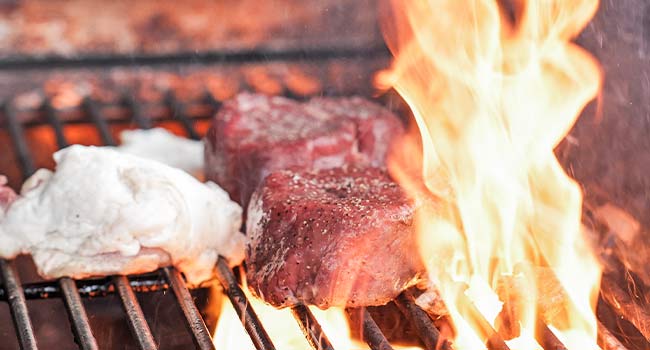
Cook for 1 to 2 minutes per side or until charred black on the outside but rare in the center. Slice the steak and serve.
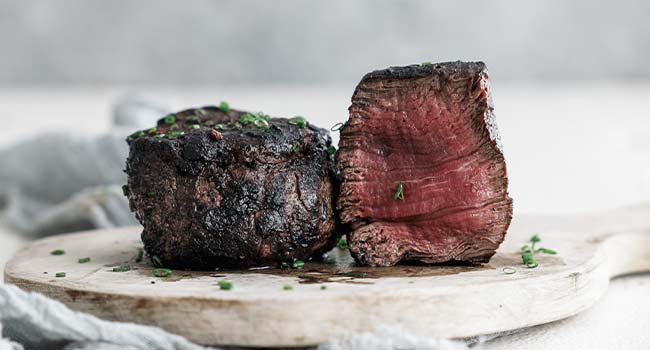
Make-Ahead and Storage
Make-Ahead: This is meant to be eaten as soon as cooking is done.
How to Store: Cover and keep in the refrigerator for 3 days. This recipe will not freeze well.
How to Reheat: This recipe does not reheat well, but if you do need to reheat it, then re-grill it on a hot grill for 2 to 3 minutes per side or until warm.

Chef Notes + Tips
- You can perform these procedures on a gas grill. However, doing it on a wood or charcoal-burning grill is better and more efficient.
- Reheating your steak will 100% cause it to increase in internal temperature, most likely past medium and into medium-well.
- You may not get the perfect grill marks, and that’s ok. The most important thing is that the steak has dark char marks and is cooked at the ideal internal temperature. Grill marks are for show, nothing else.
- The best beef cuts are those commonly eaten rare to medium-rare. Do not use a cut that requires long, slow cooking times; it will not work for these procedures.
- Moisture is the enemy of getting a dark crust on your steak, so patting it dry with paper towels is beneficial.
- Optionally place a grill lid over top to help char the steak more.
- If the butter is melting too fast and the flames are dying too quickly, try drizzling a few tablespoons of neutral-flavored oil directly over the steaks.
More Steak Recipes

Black and Blue Steak (Pittsburgh Style)
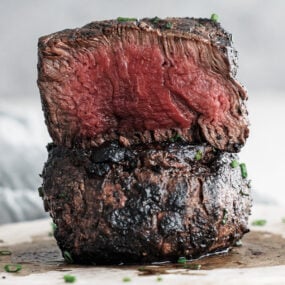
Ingredients
- 4 teaspoons olive oil
- 4 6- to-8-ounce filet mignons
- 1 stick of ice-cold butter, cut into 8 slices, or meat fat trimmings
- coarse salt and fresh cracked pepper to taste
Instructions
- Preheat a grill to high heat, which is around 550° and 650°.
- Pat the steak down on all sides with a paper towel.
- Coat the steak on all sides with the olive oil.
- Season the steak on all sides with salt and pepper.
- Place the oiled and seasoned steaks on the preheated grill.
- Once the steaks are on the grill grates, immediately add the butter directly around the steak and on the top to cause hot flames to shoot up over the grates to char the steak.
- Cook for 1 to 2 minutes per side or until charred black on the outside but rare in the center.
- Slice the steak and serve.

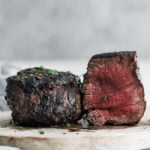
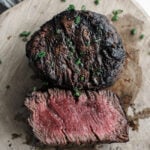
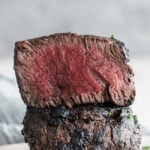
I’m from Pittsburgh and was told that a Pittsburgh-style steak is like Pittsburgh (was). Dirty (burnt) on the outside and clean on the inside (raw/rare). Back in the days of the steel mills, office workers would go to work in white shirts and come home with the shirts grey from soot. The outside of building were greyish due to all the soot in the air.
Soooo good, succulent, tender, juicy and the pieces just MELT in your mouth. Excellent recipe!
I actually use a variation of this technique when I make a prime rib roast. Heat a charcoal grill to maximum heat and put the seasoned meat on the grates (bone side down) and let it go for around 10 – 15 minutes. When the big chunk of meat is almost on fire, remove from the grill, let it stop smoking for a couple of minutes, then finish in a 265 degree oven until the internal temperature hits exactly 127 degrees. Rest for 15 minutes minimum. It sounds crazy, but it works to give a singed and tasty crust while the inside is a perfect medium to dark pink from edge to center.
The only way to eat a steak, IMO, and this is the easiest way to achieve it. Only issue is- you say it can’t be done in a pan, but then reference Lagassi’s recipe, which doesn’t exactly that…….
Anyhow, great article nonetheless.
I’m fine with steaks done a number of different ways, but for anyone wanting to try a ribeye this way I’d suggest putting it in a very low over (~120deg/convection) for an hour or so before grilling. This does essentially nothing as it pertains to cooking the protein, but softens the fat considerably and lets it blaze the ribeye on the grill (and avoids the raw fat ribeye issue discussed in this article).
I’ve got a photo of the blaze that I’d be happy to share.
I love a black and blue steak.Prepare it as your recipe as suggests but use a completely frozen steak.
Great idea!
I often cook mine this way, didn’t know it was called black and blue though … hee hee hee
I hate to waste charcoal, so I cook several steaks, etc. at a time… I let the one(s) we are going to eat rest, then slice to portion. I refrigerate the ones not to be eaten in a vacuum sealed bag for another day, warmed up to room temp on the cutting board, then slightly warmed in a pan , and sliced, you would never know it was “left-over” steak. This keeps me from having over-cooked beef. I prefer my steak a rare to med-rare and juicy red, but warm in the center.
Snazzy trick. I’d never considered purposely causing flare-ups! Genius. GREG